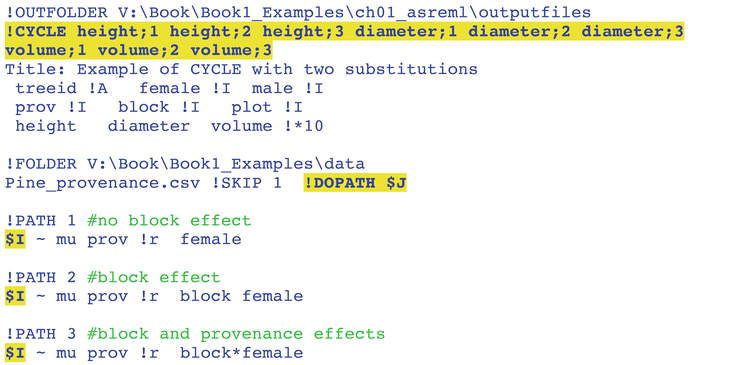Asreml Download Free
I want to fit mixed model using lme4, nlme, baysian regression package or any available. Mixed model in Asreml- R coding conventions before going into specifics, we might want to have details on asreml-R conventions, for those who are unfamiliar with ASREML codes. Y = Xτ + Zu + e..(1); the usual mixed model with, y denotes the n × 1 vector of observations,where τ is the p×1 vector of fixed effects, X is an n×p design matrix of full column rank which associates observations with the appropriate combination of fixed effects, u is the q × 1 vector of random effects, Z is the n × q design matrix which associates observations with the appropriate combination of random effects, and e is the n × 1 vector of residual errors.The model (1) is called a linear mixed model or linear mixed effects model. It is assumed where the matrices G and R are functions of parameters γ and φ, respectively. The parameter θ is a variance parameter which we will refer to as the scale parameter. In mixed effects models with more than one residual variance, arising for example in the analysis of data with more than one section or variate, the parameter θ is fixed to one.
Lucisart photoshop plugin free download for windows 7. LucisArt Pro v5.0.3 Photoshop Filter - Free Download LucisArt Pro v5.0.3 full version free Download. LucisArt is a filter work with photoshop. Its create artistic photo look like dave hill photo. Lucisart Plugin Filter, free lucisart plugin filter software downloads. Explore and execute PhotoShop compatible plugin filters (8BF) over desired image.
In mixed effects models with a single residual variance then θ is equal to the residual variance (σ2). In this case R must be correlation matrix. Further details on the models are provided in the. Variance structures for the errors: R structure and Variance structures for the random effects: G structures can be specified.
How to install ASreml - R for window system. ASreml - R installation Window. Biosci Thailand.
Variance modelling in asreml() it is important to understand the formation of variance structures via direct products. The usual least squares assumption (and the default in asreml()) is that these are independently and identically distributed (IID).
However, if the data was from a field experiment laid out in a rectangular array of r rows by c columns, say, we could arrange the residuals e as a matrix and potentially consider that they were autocorrelated within rows and columns.Writing the residuals as a vector in field order, that is, by sorting the residuals rows within columns (plots within blocks) the variance of the residuals might then be are correlation matrices for the row model (order r, autocorrelation parameter ½r) and column model (order c, autocorrelation parameter ½c) respectively. More specifically, a two-dimensional separable autoregressive spatial structure (AR1 x AR1) is sometimes assumed for the common errors in a field trial analysis. The example data: nin89 is from asreml-R library, where different varities were grown in replications / blocks in rectangular field. To control additional variability in row or column direction each plot is referenced as Row and Column variables (row column design).
Thus this row column design with blocking. Yield is measured variable. Example models I need something equivalent to the asreml-R codes: The simple model syntax will look like the follows: rcb.asr. $ begingroup$ The following is comments in mixed model group: You might look at the regress and spatialCovariance packages of David Clifford. The former allows fitting of (Gaussian) mixed models where you can specify the structure of the covariance matrix very flexibly (for example, I have used it for pedigree data). The spatialCovariance package uses regress to provide more elaborate models than AR1xAR1, but may be applicable. You may have to correspond with the author about applying it to your exact problem.
$ endgroup$ – Nov 17 '11 at 23:40 •. $ begingroup$ if I get a chance I will try to tackle as much of this as I can, but quite frankly I may not get to it, I've got a lot on my plate. Looking into the packages that David Clifford suggested sounds like a great idea -- maybe you can solve your own problem that way.

I'm pretty sure that model 1 can be done with MCMCglmm, and I'm pretty sure that (other than the spatialCovariance mentioned, which I'm unfamiliar with) the only way to get it done in R is by defining new corStructs -- which is possible, but not trivial. $ endgroup$ – Nov 18 '11 at 0:16. You can fit this model with AD Model Builder. AD Model Builder is free software for building general nonlinear models including general nonlinear random effects models. So for example you could fit a negative binomial spatial model where both the mean and over dispersion had an ar(1) x ar(1) structure. I built the code for this example and fit it to the data.